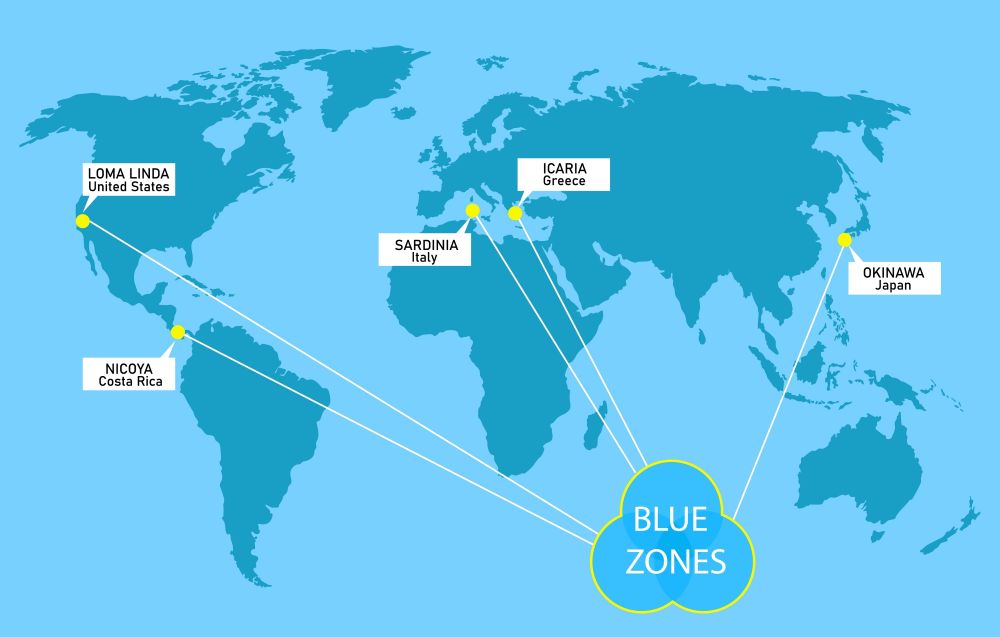Unveiling the Health Potential of Blue Zones: Secrets to Longer, Healthier Lives
In the quest for longevity and health, there are certain pockets of the world that stand head and shoulders above the rest. These regions, referred to as 'Blue Zones', are home to the highest proportion of centenarians and are rife with lessons on healthy living. But what makes these Blue Zones so unique, and how can we apply their principles to our own lives?

Delving into the Blue Zones
First coined by Dan Buettner in his National Geographic feature, the term ‘Blue Zones’ refers to five distinct regions: Okinawa (Japan), Sardinia (Italy), Nicoya (Costa Rica), Icaria (Greece), and Loma Linda (USA). These regions have the highest population of centenarians, living well past 100 years with fewer instances of chronic diseases such as heart disease and cancer.
What Sets Blue Zones Apart?
It’s not just about living longer in these regions; it’s about living better. The secret seems to lie in a unique blend of lifestyle factors: diet, physical activity, social engagement, and a sense of purpose. These factors intertwine to create a holistic approach to health and longevity, providing a roadmap that we can all learn from.
The Dietary Factor
While each Blue Zone has its unique dietary patterns, there are common threads. These diets are rich in fruits, vegetables, whole grains, and legumes, with minimal intake of processed foods and animal products. They rely on local, seasonal produce, and the majority of calories come from plant sources.
The Importance of Physical Activity
In Blue Zones, physical activity is a natural part of life. Rather than scheduled workouts, activity is incorporated throughout the day, be it through farming, walking, or traditional practices like Tai Chi.
Social Engagement and Sense of Purpose
Social connections and a sense of purpose also play a crucial role in these communities. Aging is revered, and elderly individuals often live with family or remain engaged in the community. There’s a strong sense of belonging and purpose, contributing to overall happiness and mental health.
Lessons from the Blue Zones
- Embrace a plant-centric diet: Prioritize fruits, vegetables, legumes, and whole grains, minimizing processed foods and animal products.
- Incorporate natural movement: Find ways to build physical activity into your daily routine, rather than relying solely on scheduled workouts.
- Foster social connections: Engage with your community, maintain close relationships, and make time for social activities.
- Find your purpose: Identify what gives your life meaning and make it a central part of your daily routine.
As we wrap up our exploration of the Blue Zones, it’s clear that their secrets to health and longevity go beyond diet and exercise. They encapsulate a holistic approach to well-being, intertwining physical health, mental wellness, social connections, and a sense of purpose. While we may not all live in Blue Zones, there’s much we can learn from their approach to life, offering us a blueprint for longer, healthier, and happier lives.




